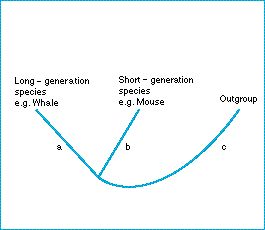Molecular evolution and neutral theory - Why is molecular evolution constant?

Neutralism fails to predict the molecular clock
According to the neutral theory, the rate of molecular evolution is equal to the neutral mutation rate: the rate will therefore be proportional to the time scale of the process generating mutations. This is normally thought to imply generation time. Most mutations probably arise as copy errors during mitotic or meiotic replication. The mutation rate should therefore be proportional to the number of DNA replications in the germ line. There are fewer such replications per unit of absolute time in species with longer generations, because the number of mitotic divisions in the germ line is much less than proportional to longevity.
In fact, mutation rates per generation are not noticeably higher in species with longer generation times. A neutralist would expect neutral evolution to be slower in species with longer generation times. Selectionists can therefore retort that neutralism fails to predict the molecular clock: a neutralist prediction should tick in proportion to numbers of generations, not number of years.
Figure: a, b and c are the numbers of evolutionary changes in the three segments of the tree. The outgroup can be any species known to have a more distant common ancestor with the pair of species being compared. The evidence suggests that a approximately equals b for many species, whereas a would be less than b if generation time influenced evolutionary rate.
| Next |



